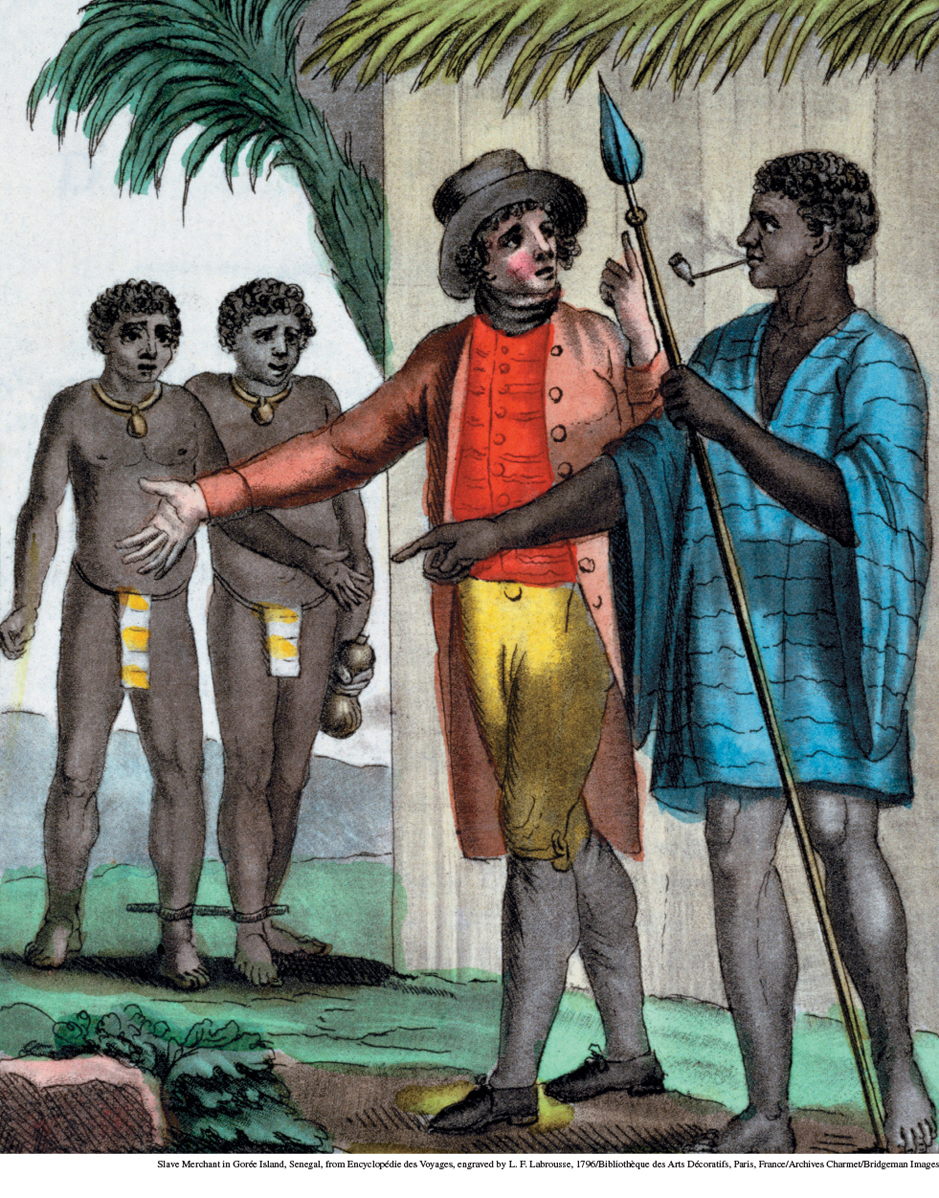Introduction to Chapter 14
CHAPTER 14
Economic Transformations
Commerce and Consequence 1450–1750

“I have come full circle back to my destiny: from Africa to America and back to Africa. I could hear the cries and wails of my ancestors. I weep with them and for them.”1 This is what an African American woman from Atlanta wrote in 2002 in the guest book of the Cape Coast Castle, one of the many ports of embarkation for slaves located along the coast of Ghana in West Africa. There she no doubt saw the whips and leg irons used to discipline the captured Africans as well as the windowless dungeons in which hundreds were crammed while waiting for the ships that would carry them across the Atlantic to the Americas. Almost certainly she also caught sight of the infamous “gate of no return,” through which the captives departed to their new life as slaves.
T his visitor’s emotional encounter with the legacy of the Atlantic slave trade reminds us of the enormous significance of this commerce in human beings for the early modern world and of its continuing echoes even in the twenty-
Thus commerce joined empire as the twin creators of a global network during these centuries. Together they gave rise to new relationships, disrupted old patterns, brought distant peoples into contact with one another, enriched some, and impoverished or enslaved others. They also generated new ways of expressing status, as the Working with Evidence feature illustrates. From the various “old worlds” of the premodern era, a single “new world” emerged — slowly, amid much suffering, and accompanied by growing inequalities. What was gained and what was lost in the transformations born of global commerce have been the subject of great controversy ever since.
AP® EXAM TIP
This timeline will help you connect the important sequence of events of Chapters 13 and 14.
| A MAP OF TIME | |
|---|---|
| Early 15th century | Beginning of Portuguese voyages along the coast of West Africa |
| 1440s | First European export of slaves from West Africa |
| 1492 | Columbus reaches the Americas |
| 1497 | Vasco da Gama reaches India |
| 1545 | Founding of Potosí as silver mining town in Bolivia |
| 1565 | Beginning of Spanish takeover of the Philippines |
| 1570s | Beginning of silver shipments from Mexico to Manila |
| 17th century | Russian conquest of Siberia |
| 1601–1602 | British and Dutch East India companies established in Asia |
| 18th century | Peak of the transatlantic slave trade |
| 1750s | British begin military conquest of India |
SEEKING THE MAIN POINT
In what different ways did global commerce transform human societies and the lives of individuals during the early modern era?